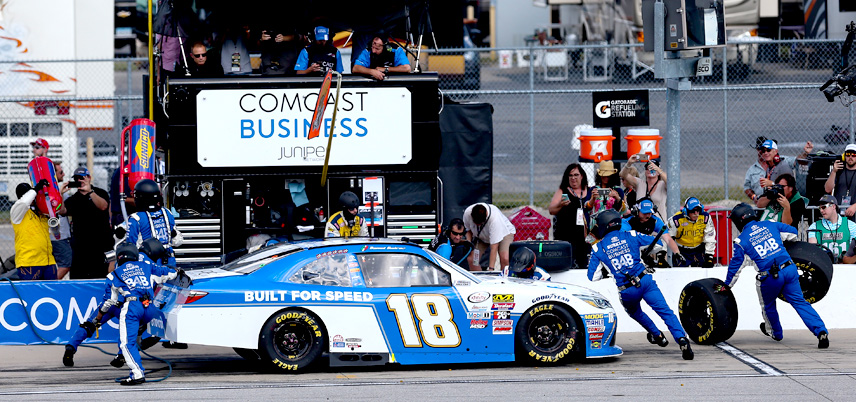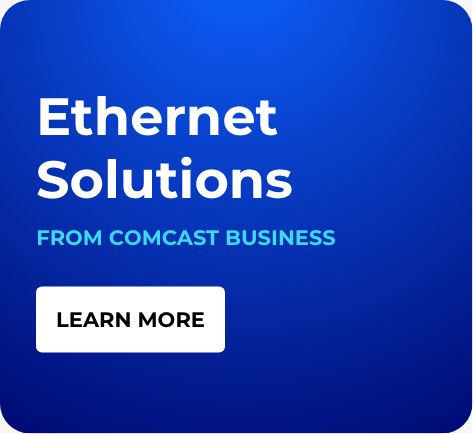High-Speed Connectivity Revs Up Excitement at NASCAR Races

High-Speed Connectivity Revs Up Excitement at NASCAR Races
When you think of NASCAR, high-speed internet isn’t the first thing that comes to mind. It’s the excitement of high-powered racecars whizzing around a track at dizzying speeds of up to 200 miles per hour.
Eventually, however, fans all around the NASCAR circuit will be able to do more than just watch from their seats. As colorful racecars buzz in and out of their field of vision, fans will be able to share that experience in real time with social media friends by posting comments and videos of the race. So, yes, race day is getting even more exciting. And that’s thanks to Ethernet-enabled high-speed connectivity, which is becoming more and more available at NASCAR racetracks.
High-speed connectivity is already a critical component of the racing experience for drivers and pit crews, who leverage high-speed connections and sophisticated analytics to monitor vehicle systems and track conditions. But now connectivity is being extended into spectator areas, becoming an integral part of race day for fans. At the Daytona International Speedway (DIS), for instance, high-speed Wi-Fi is available throughout the concourses, concessions, ticketing windows, hospitality areas, campgrounds, suites, and neighborhoods along the racetrack’s nearly mile-long frontstretch.
Fans can take full advantage of the racetrack’s network in the Midway and UNOH FANZONE to interact with friends via social media, giving them live updates on the race. Wi-Fi connectivity also allows fans to use their smartphones and tablets for services such as the DIS mobile app to receive real-time information during races in addition to features such as event schedules and notifications. Several other tracks on the NASCAR circuit are evaluating Wi-Fi technology to enhance the fan experience and make the sport more appealing to a broader demographic of fans.
Multiple Benefits
Reliable Ethernet-enabled connectivity at NASCAR racetracks will serve multiple purposes. In addition to enhancing the race day experience, high-speed connectivity will introduce new levels of convenience for fans. Modern racetracks are massive facilities, and it can be tough to find your way around when they get busy – which is inevitable on race day – or if you’re unfamiliar with the place.
So NASCAR is investing in data driven-solutions to help fans find parking as they arrive at a racetrack, guide them to their assigned seats, and deliver information on concession stands and ancillary events that take place on race day.
Fast internet connectivity also delivers marketing benefits. Racetracks in the future will have the capability to capture information from willing fans and send them personalized promotions and information about future events. Through Bluetooth and geolocation technology, racetracks also will be able to pinpoint the location of fans, once they log on to the network, for informational and promotional purposes. For instance, a fan walking by a certain concession stand could receive a coupon for a purchase at the stand.
Technology Everywhere
Extending Wi-Fi connectivity to fans is a logical progression in a series of steps NASCAR has taken over the years to bring technology to the sport – both on and off the track. Technology has become a de facto ghost rider in racecars. Winning a race in the Digital Age isn’t just about how hard a driver can push an internal combustion engine to gain as much speed as possible on the track.
There’s a lot of technology in the cars themselves and at the pit. In addition to spare tires, wrenches and jacks, today’s race pit also includes servers, sophisticated applications and monitors used by computer technicians and data analysts to process real-time data that can help win a race. As cars whiz around the track, sensors and monitoring software transmit data back to the pit about car systems and track conditions. Pit crews communicate relevant data to drivers to help make decisions as they negotiate the track and maneuver around other racecars.
Technology, therefore, is integral to an activity that requires a level of fast thinking and agility matched only by a rare few other human endeavors.
Reliable Networks
Reliable, sophisticated networks are making possible the digitization of the NASCAR experience. At Daytona, for instance, ARRIS Global Services designed and deployed a network to deliver carrier-class Wi-Fi to tens of thousands of fans on race day.
Meanwhile, Juniper Networks provides the Joe Gibbs Racing team with an Ethernet network solution based on the Junos Space Network Management Platform that delivers real-time data about car performance, track conditions and competition status. The high-performance network gives the team a competitive advantage that can help make the difference in winning a race.
Comcast Business has been a partner of Joe Gibbs Racing and ARRIS Racing since 2015, and just announced an extension of the partnership to join 2016 NASCAR XFINITY Series Champion Daniel Suárez at New Hampshire Motor Speedway on Sept. 24 and Dover International Speedway on Oct.1.
Comcast Business also is playing a role in NASCAR’s digitization by providing Ethernet service to a number of tracks on the race circuit. Ethernet over fiber is making it possible for NASCAR and race teams to automate more processes on the track and in the stands.
From a fan’s perspective, high-speed connectivity makes what is already an exciting sport even more compelling. Going forward, NASCAR plans to deliver more real-time data to fans during races about teams, cars, standings, weather and track conditions. The data won’t quite put fans in the cockpit, but it will be the next best thing. And that’s as exciting as it gets for a race fan.
Ethernet-enabled connectivity is further enhancing the race day experience.
Locked Content
Click on the button below to get access
Unlock NowOr sign in to access all content on Comcast Business Community
Resource Center
Learn how Comcast Business can help
keep you ready for what's next.











